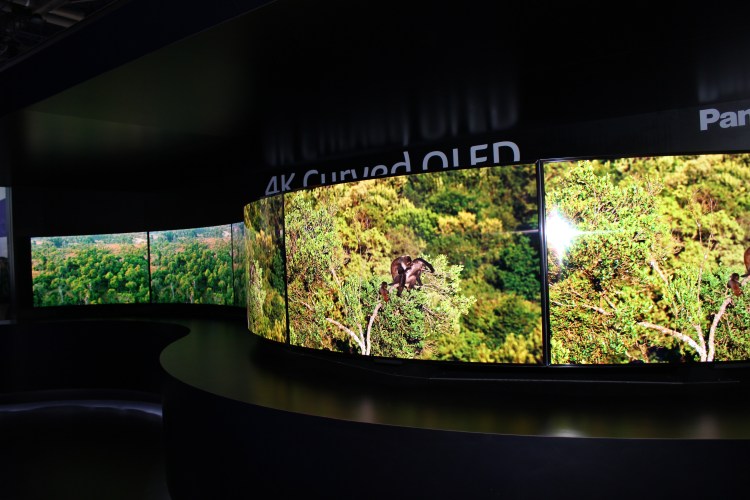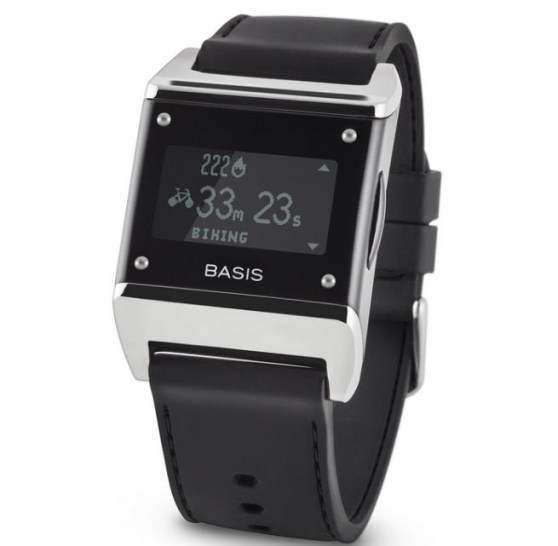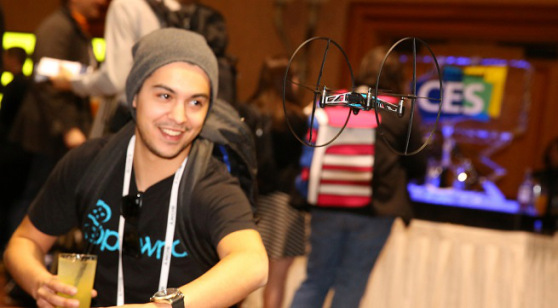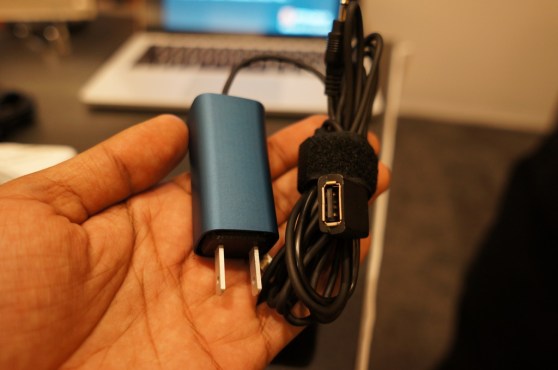We didn’t cover all of the 2 million square feet of exhibit space at the 2014 International CES, but we’ve got the blisters and sore bones to show that we tried. Now that we’ve left Las Vegas and the huge tech trade show, we’ve been able to think about what the biggest trends were.
We’ve walked our 30 miles or so through the convention halls. We liked what we saw. Of course, we only saw a small slice of the tens of thousands of products on display. We’re glad to see fads like 3D glasses for TVs fade away. And it was interesting to see how “phablets,” or phones with huge, tablet-like screens, have caught on in places like Asia even though we’ve ridiculed them in the past.
There are objective measures of what was hot. Hotwire/33Digital reported that the top brands being talked about on Twitter were Samsung (19,858 mentions), Sony (16,497 mentions), LG (12,159 mentions), Logitech (10,798 mentions), and PlayStation (8,828 mentions). The top five trends being talked about were 4K TV resolution (15,667 mentions), wearables (11,873 mentions), smart gadgets (11,302 mentions), 3D printing (9,632 mentions), and the Internet of Things (9,082 mentions). And check out this “big data” analysis of the social media buzz around CES.
But our heat-seeking radar, honed by years of experience, was up. And these are our impressions below.
You can find all of our CES 2014 coverage here. Keep an eye out for more stories and trend pieces from the show over the next week.
Wearables flood the show, and some of them are cool
Google Glass kicked off this category awhile ago, but wearable technology was everywhere at CES. Intel CEO Brian Krzanich showed off sensor-processor devices that could be embedded ear buds, jewelry, smartwatches, and coffee mugs.
The “Internet of Things” trend will embed smarts in dumb things thanks to advances in processors, sensors, and connectivity. And a lot of those things are going to be worn. The basic architecture leverages the structure that computing has taken. Some smarts can be built directly into the device, which communicates with a smartphone. It taps the smartphone for computing power, but the smartphone itself can tap web-connected supercomputing power in the data center.
So these smart things can offload their processing to the cloud. They can also produce a horde of useful data that can be analyzed in the cloud and then put to use. A smartwatch from Razer can notify you of messages. Earbuds from LG can track your heart rate. CSR’s Bluetooth jewelry can change colors based on your mood.
The wearable that I like is the Basis Band (pictured above with its new Carbon Steel Edition band). Its newest version measures your running, walking, or biking time. It tracks your sweat, heart rate, movement, and sleep. And the sleep analytics coming soon will measure your time spent in light sleep, REM sleep, and deep sleep. Over time, this data could be valuable for understanding your habits and changing them to improve your health. — Dean Takahashi
Drones are getting smarter and more versatile
Drones have been a staple at CES for years, but mostly as showpieces, curiosities, and one-time jokes. They’re still looking for some really useful applications beyond spying and entertainment. But the diversity of the drones was impressive at this year’s show.
Vengeance Labs combined Epiphany smart glasses with the ability to control a Parrot smart drone. The DJI Phantom 2 can carry a pretty good camera at a cost of $870, or you can get a built-in camera in a better model for $1,200.
Parrot’s own AR Drone took the attention of the show a few years ago, but this time Parrot returned with two smaller drones: the Mini Drone (pictured) and the Jumping Sumo. The Mini Drone can both roll on the ground at a high speed and fly like a quad-rotor drone as well. The Jumping Sumo can roll and jump.
The only trouble with the Mini Drone is its battery life. It can only go six minutes before it needs a recharge. But that’s plenty of time to use it to sneak up on someone and give them a scare. — Dean Takahashi
4K TVs will actually be affordable this year — but content will be slim
I wasn’t the biggest fan of 4K TVs leading up to this CES. Though they offer a much higher-resolution picture than our current HDTVs, 4K sets in 2014 seemed like a marketing ploy to encourage people to upgrade their TVs — even if they didn’t need to.
The big problem? Unless you’re sitting very close to a 4K set or have one with a screen above 70 inches, you likely won’t notice a big improvement over a current HDTV.
But after seeing several 4K sets on the show floor, including Vizio’s surprisingly affordable sub-$1,000 50-inch set, I found myself warming up to them. The ridiculously expensive curved 4K crop from Samsung and LG are a joke — but it’s clear that 4K will actually be a viable option for many consumers at smaller sizes.
Now the only problem is content. Netflix was seemingly everywhere during the show encouraging 4K and promoting the fact that its original series House of Cards will be streaming in the higher-resolution format, and Amazon followed suit. But we still don’t know what the bandwidth requirements will be to stream the shows (if you’re already having trouble streaming HD content smoothly, you can give up hope on 4K right now).
At the very least, 4K owners will be able to enjoy upscaling their current HD content to 4K. That’s not enough to encourage mainstream consumers to upgrade their TVs, but it may be enough to appease the early adopters. — Devindra Hardawar
Gaming alternatives move full steam ahead
The PlayStation 4 has sold 4.2 million units, and the Xbox One has sold 3 million. But the universe of gaming is expanding beyond the consoles. At CES, gaming clearly was busting out of its old barriers.
Oculus VR made a big impression for a small company with its latest version of its Oculus Rift virtual reality goggles. The new goggles feature low persistence, which means that the Oculus now removes some of the bad images when you’re moving your head. The result is that the brain processes only the good images and you no longer see motion blur. And that reduces motion sickness. The headset also has positional tracking so you can maneuver in three dimensions now. Sony, apparently worried about the popularity of Oculus VR, announced its own new version of virtual reality goggles (with a 40-degree field of view, compared to the 360-degree field of view for Oculus) as a possible expansion for the PlayStation 4.
The other big alternative that came to life at CES was Valve’s Steam Machines. The maker of the Steam digital game-distribution service and video games like Half-Life announced a Linux-based alternative to Windows gaming. While questions remain about Valve’s approach, it was able to convince 14 hardware makers to build Steam Machines based on the SteamOS and the Steam Controller. Dell’s Alienware looks like it will be one of the key partners for making the Steam Machines take off when they debut in the second half of 2014.
But there was a lot more. PowerA, Logitech, and others showed controllers for playing games on smartphones and tablets. Tobii and Steel Series showed off eye-tracking technology as a way to control games. Razer showed off Project Christine, a crazy design for a modular gaming PC. Intel showed off its RealSense 3D camera for gesture games on the PC. Nvidia’s Tegra K1 was able to play jaw-dropping Unreal Engine 4 demos on mobile devices, with the images projected to big screens. But we were quite disappointed that Nvidia didn’t follow up with a new version of its Shield gaming device. — Dean Takahashi
Hardware startups continue to improve
This year at CES, we focused more on Eureka Park, the conference’s startup showcase, rather than getting lost on the main show floor. And judging from the companies I saw, that was a good choice.
Startups like Touchjet, which developed an interactive Android projector, and Finsix, whose technology can dramatically reduce the size of our laptop’s AC power adapters, proved that some of the best innovation at CES wasn’t on the main floor. As the components get cheaper and startups become more familiar working with and developing hardware, it won’t be long until we see the next Pebble.
Some of the startups, like Oculus VR, which raised $75 million, are assembling sizable war chests. 3D printing firms like Maker Bot are plentiful, and they’re spawning new hardware startups that use their printers to create inexpensive prototypes. And with contract manufacturers in Asia able to ramp products quickly, it doesn’t take a billion-dollar company anymore just to get a hardware product out the door. — Devindra Hardawar and Dean Takahashi






